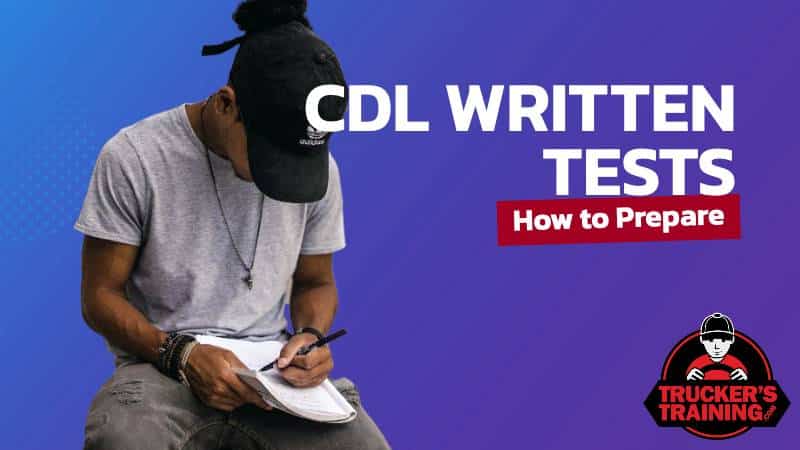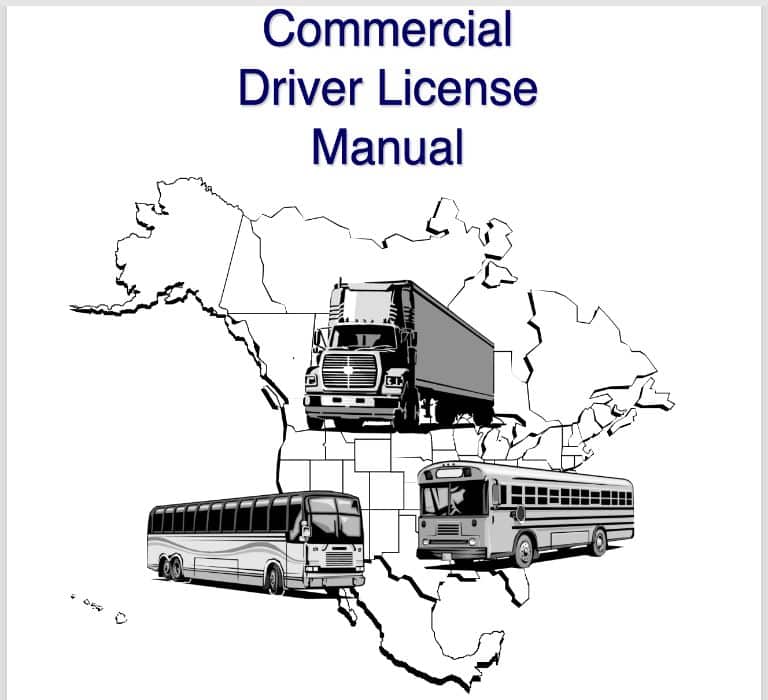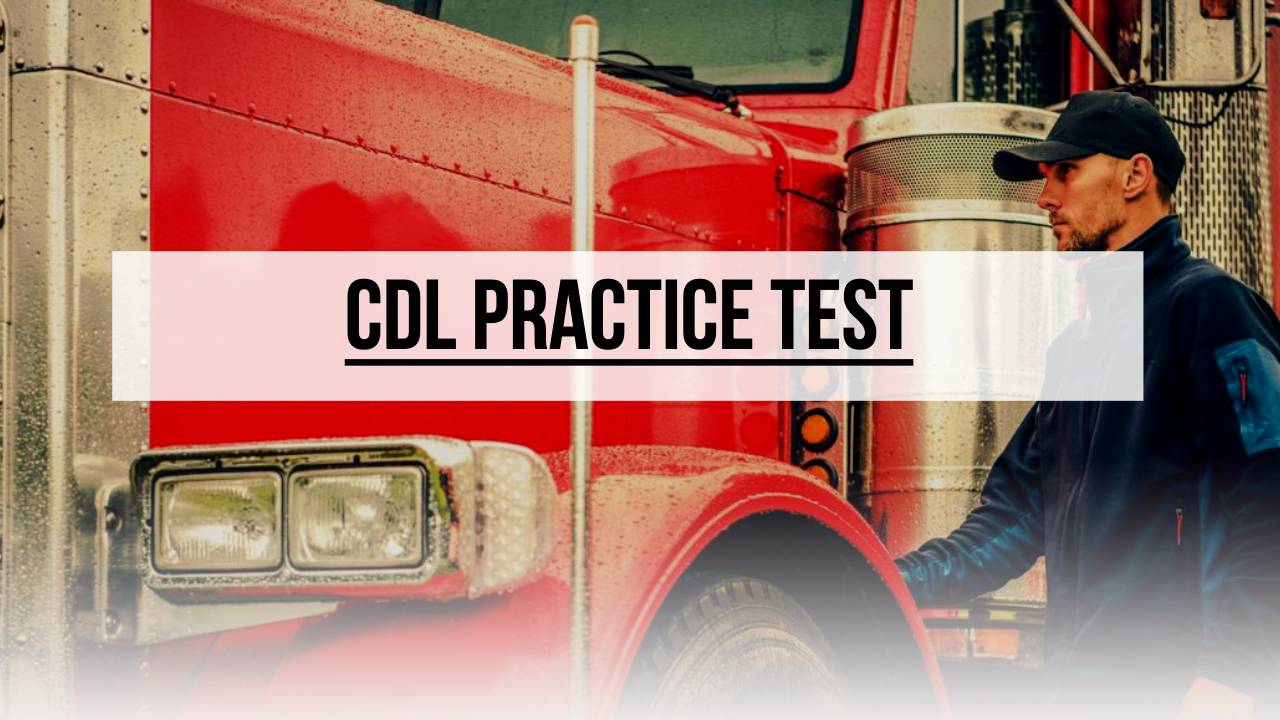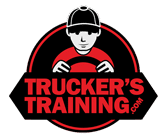There are five key things you need to be aware of before taking the CDL written tests. This article will step you through what would be helpful to pass these written tests, which is one of the steps before your CDL driving test. And, there are some hints spread throughout this article, which could help you pass.
Before you drive a truck on a public road with an instructor, you will need a CLP (“Commercial Learner Permit”).
The written tests aren’t that difficult. (Except for the HazMat test, more on that later.)

What You Need to Know Before Taking the CDL Written Tests?
1. Know the Structure of the Written Test
Understanding the structure of the written tests is key.
Each test will be multiple choice, with four possible answers. You will be required to score 80% correct answers to pass.
There will be the basic CDL test (50 questions in most states) and several endorsement tests. Each endorsement test usually has 20 questions. Since you need 80% on each test to pass, with a 20 question test, you will need 16 correct answers to pass.
Many states now test using touch-screen computers. Often the tests will stop when you pass or when it is mathematically impossible for you to pass. For a 20 question test (80% for a pass), the machine would automatically give you a passing mark after your 16th correct answer—or automatically give you a failing mark after your 5th incorrect answer.
Some machines will let you “skip” a question one time, and let you come back to it later. This can be a handy if you are uncertain of an answer.
If you don’t know an answer, skip the question and come back to it later. If you still don’t know, guess the best you can. A wrong answer has the same penalty as an unanswered question, so at that point you might as well guess.
Hint: When reading the questions, be very aware of qualifying words: “always”, “never”, “not”, “without looking”, etc. These words can completely change the nature of the question.
2. Understand How the Truck Operates
It is better to understand the material than to attempt to memorize a bunch of facts. Understanding how a truck operates will help you when you start working. Understanding will also help you pass the written tests.
Work with the equipment. Visualize how the equipment works. Think of various scenarios where you are using the equipment.
Hint: Here are two facts that you will almost certainly need to know when you take the written tests (probably in the tanker section):
- Remove sunglasses when you drive into a tunnel
- Be prepared for strong crosswinds when you exit a tunnel.
3. Study the Handbook
There is no better way to pass the test, than to know the material. The best way to know the material is to study.
Get a copy of the CDL Handbook. They are available in paper form for free from the DMV. They are also available as a .pdf on-line. Here is California’s version: www.dmv.ca.gov/web/eng_pdf/comlhdbk.pdf You can find your state’s CDL handbook, most likely on their DMV website.
How do you learn?
- Do you write everything down?
- Do you read to understand?
- Are the pictures in the handbook good enough?
- Or, do you need to see and touch the parts of the truck?
The best way to learn is the way that you learn.
Hint: Read each question carefully. Read it two or three times if necessary. If more than one answer seems right or none of the answers seems right—odds are, you misread the question.
4. Practice
There are many free resources available:
- Study guides
- Flash cards
- Practice tests
Take practice tests. As many practice tests as you can. You should be acing the practice tests before you step into the DMV to test.
Hint: Driving with alcohol: The law used to state that any time that a CDL holder was driving any vehicle the legal limit for blood alcohol content (“BAC”) was .04%. It didn’t matter if the driver was operating a commercial vehicle or a car. The law has changed.
Now, a CDL holder can legally operate a non-commercial vehicle with a BAC less than .08%—and a commercial vehicle with a BAC less than .04%. However, any alcohol detected while operating a commercial vehicle will put the driver out-of-service for 24 hours; and the trucking company could fire the driver. Remember, just because it is legal to drive … doesn’t make it smart.
5. Rest Before Taking the Test
It seems obvious, but you should be well rested before taking a test. A good night sleep and an unrushed trip to the DMV will definitely improve your chances of passing the tests.
A late night, or a rushed trip to the DMV will cause anxiety and could lead to silly errors.
You should also be calm and relaxed. You are given plenty of time to answer the questions—if you know the material.
Hint: Here is something you might find on a written test:
The basic speed law states that a motorist must drive at a speed that is safe and reasonable. A driver must consider:
- Other traffic
- Road and weather conditions
- Dangers at intersections
For example, you could be ticketed for driving 45 in a 55 zone, if there was fog, rain, or other conditions that make such a speed unsafe.
The posted speed limits are for cars on dry pavement.

Final Thoughts
HazMat
The HazMat test is by far the most difficult written test. Easily as difficult as all the other tests combined. Normally, a student will take all the basic CDL written tests (sometimes in two different trips to the DMV), then study separately for the HazMat test.
Preparation
The secret to passing any written test is good preparation.
Endorsements
Get as many endorsements as you can. Even if you never plan to haul tankers, having a tanker endorsement won’t hurt you. And, you never know what sort of job might suddenly become available in the future. However, remember, most states have a fee for each endorsement test you take. Some endorsements won’t help your career. If you are going to be a truck driver, having a passenger endorsement would be unnecessary.
Canadians: The tanker endorsement is part of the basic CDL in Canada, it is not optional.
State by State
Each state tests slightly differently. If things are not as you expect, deal with what you are asked to do. If uncertain, ask a DMV employee for clarification.
CDL School
You will need to go through a driving school to get your class A or B CDL. They will provide a lot of help when it comes to preparing for these tests. Hopefully, this information will provide the help when you are taking the CDL written exams.
Have you taken any of the CDL written exams? How did you find it? We would love for you to share in the comments.

Michael has had his Class A CDL since 2002, and has worked for several OTR trucking companies. He also drove a truck for the Yellowstone National Park Laundry Department. Michael has worked for two FRA regulated railroads. Then he spent a year driving an ultrasonic, rail-scanning truck on railroad tracks. In addition, Michael has 10 years of experience in logistics and operations where he worked safely with trucks and railroad equipment. Earlier in his life, he was an educator; teaching throughout the U.S. and South Korea.




